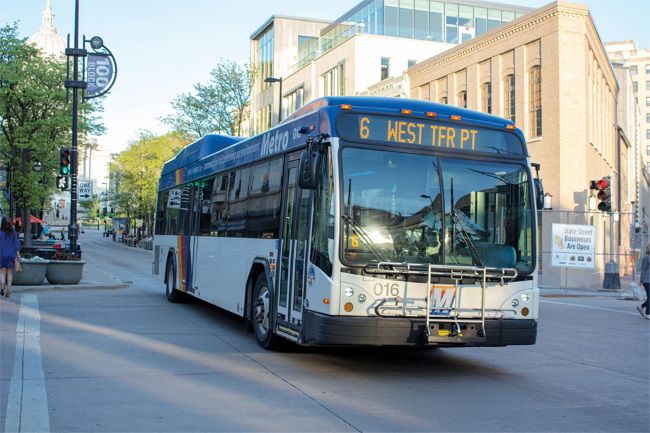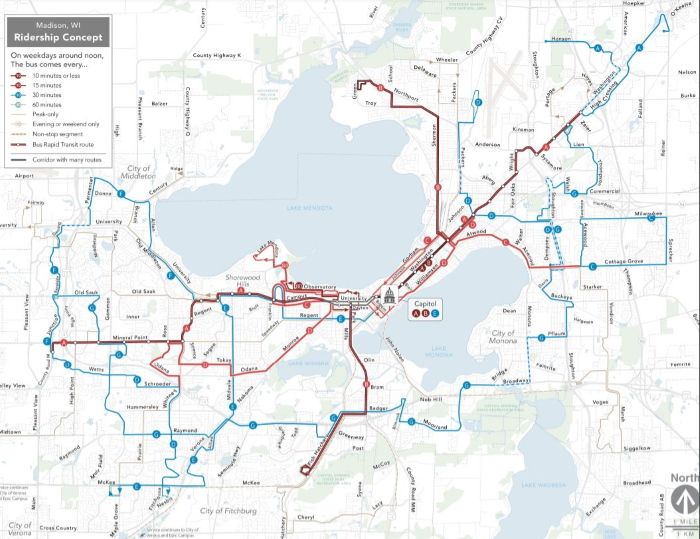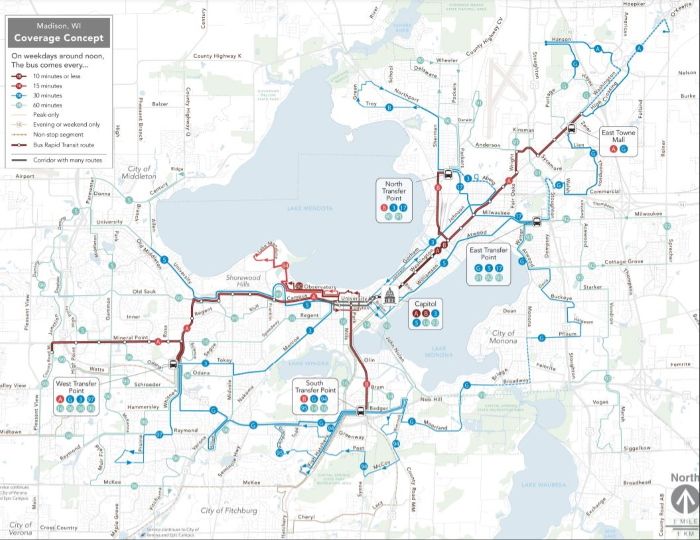The quality of Madison Metro's current service is definitely one of those your mileage may vary things. It works well for many people who commute to and from downtown or campus on a typical weekday. But, the farther you get from the downtown and campus, the spottier bus service gets. Many low-income people on the periphery of the city face either very long commutes, sometimes with multiple transfers, or find that Madison Metro is simply unable to accommodate their transit requirements. Service on the weekend often means longer waits and/or that the convenient route that ran on Friday doesn't run on Saturday.
I give Mayor Satya Rhodes-Conway a lot of credit for doing what her predecessors failed to do: stop kicking the public transit can down the road. Despite the bus system's long-standing limitations and the city's ever-growing population, previous mayors did little beyond raising fares. Paul Soglin showed zero leadership during his last 2 terms as mayor on this issue. Both he and my former alder David Ahrens simply rolled over and played dead on the issue. They were quick to blame dwindling federal funds and a Republican state government that was and remains genuinely hostile towards Madison (and public transit) rather than roll up their sleeves and tackle the problem as best they could given the circumstances.
Being a transit user, I am extremely pleased to see that we as a city are moving forward with improving bus service. Because of Covid, I no longer commute to the office 5 days a week but I do ride the bus on the 2 days I am required to be at my desk instead of at home with my cats to keep me company and point their butts at the webcam during meetings. I own a car and ride my bike during good weather so my bus rides outside of the workday commute have been sporadic lately, though I expect to be on the bus more often as winter approaches.
Personally, I rate Metro's service as decent to good, depending on the day. It gets me to and from my 9-5 job fine. By and large it also does well getting me downtown and to campus for movies, grabbing a bite to eat, and whatnot. It is rather less effective at getting me to the cinemas on the west side and cannot accommodate midnight movies. Taking a bus to the homes of friends is a mixed bag as well.
But things will certainly change if and when BRT and the network redesign happen. The BRT project seems to have most of the details in place including the route and station placement. When there are online meetings about it, they seem to be more informational at this point rather than inquisitive. On the other hand, the network redesign process is still very much in the early stages and subject to significant change. Indeed, Madison Metro is actively soliciting input.
We Madisonians have to collectively decide what the new bus network will be like. The people we've hired to help us with this, Jarrett Walker and Associates, have put forward two demonstration networks for our consideration. There's a ridership network:
The latest survey was crafted to tease out our preferences in the matter. Honestly, I answered "I don’t know" a lot on it. The only time I made something resembling a firm decision between the two options was when I was offered a slider. Moving it one way indicated you are more partial towards coverage and sliding it in the opposite direction put you somewhere in the ridership camp. There were degrees of preference, however, not just wholehearted endorsement of one or the other. I came down leaning slightly towards ridership.
It's a tough decision. When I look at the demo maps above, I see advantages for me in both of them. Having a bus that runs every 15 minutes close to home would be nice but being able to bus it to more places would also be great. And that is what the survey asked: which of the options was better for you and your neighborhood. But, as the Mayor reminded us in the last meeting, the project also has an equity component to it. Making bus service better for low-income folks, many of whom live in clusters closer to the Madison's periphery than to downtown, is part of the plan. Hopefully those people are able to take the surveys and give input because, if it's only Babbitt types that respond, the result may be a network skewed to their transit priorities.
So, what would be best for me and my east side neighborhood? Lots of frequent service. Given limited resources, that would mean poorer service for low-income people on the southwest side. How to choose? (I am now having a weird Rawlsian veil of ignorance flashback to a college political science course.)
One thing that came to mind was the possibility of starting off with a system that is more ridership oriented to boost numbers. With data in hand, the city could go to the transit alms givers and say, "Look at all of those riders! You must give us more funds!" Then, with the budget boost, coverage can be expanded.
Is this how it works in the real world? Probably not.
There's the rub – money. If we had state legislators that were more amenable to public transit, we'd have better bus service. And they needn't necessarily open the state coffers wider. Allowing municipalities to work together and create regional transit authorities would be very helpful.
But we don't have transit friendly legislators at the Capitol so, as Donald Rumsfeld would say if we were in charge of Metro Transit, you offer service with the resources you have, not the resources you might want or wish to have at a later time. The trick now for us is to determine how we're going to allocate the transit resources we have while working towards increasing those funds for later improvements.



No comments:
Post a Comment